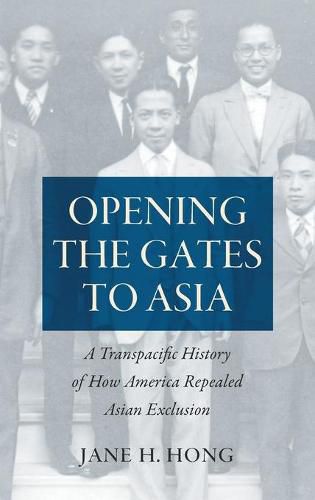Readings Newsletter
Become a Readings Member to make your shopping experience even easier.
Sign in or sign up for free!
You’re not far away from qualifying for FREE standard shipping within Australia
You’ve qualified for FREE standard shipping within Australia
The cart is loading…






U.S. immigration and naturalization laws tracked shifting power dynamics in the Pacific as the United States emerged as a major world power during World War II and the Cold War. Much is known about America’s long history of Asian immigrant exclusion laws, but how did these laws end? Why did the United States begin opening its borders to Asians after barring them for decades? Jane H. Hong argues that the transpacific movement to repeal Asian exclusion was part of U.S. empire-building efforts in the region and the rise of a new informal U.S. empire in Asia. Drawing on archives in the United States, India, and the Philippines, she traces the relationship between exclusion and empire. The dismantling of formal empire across the Asia-Pacific region underpinned postwar Asian immigration to the Unites States, even as advocates on both sides of the Pacific worked to redraw the ethnic and racial boundaries of the American nation.
Positioning repeal at the intersection between U.S. civil rights struggles and international developments in Asia, Hong raises thorny questions about the meanings of nation, diaspora, and citizenship on the global stage.
$9.00 standard shipping within Australia
FREE standard shipping within Australia for orders over $100.00
Express & International shipping calculated at checkout
U.S. immigration and naturalization laws tracked shifting power dynamics in the Pacific as the United States emerged as a major world power during World War II and the Cold War. Much is known about America’s long history of Asian immigrant exclusion laws, but how did these laws end? Why did the United States begin opening its borders to Asians after barring them for decades? Jane H. Hong argues that the transpacific movement to repeal Asian exclusion was part of U.S. empire-building efforts in the region and the rise of a new informal U.S. empire in Asia. Drawing on archives in the United States, India, and the Philippines, she traces the relationship between exclusion and empire. The dismantling of formal empire across the Asia-Pacific region underpinned postwar Asian immigration to the Unites States, even as advocates on both sides of the Pacific worked to redraw the ethnic and racial boundaries of the American nation.
Positioning repeal at the intersection between U.S. civil rights struggles and international developments in Asia, Hong raises thorny questions about the meanings of nation, diaspora, and citizenship on the global stage.